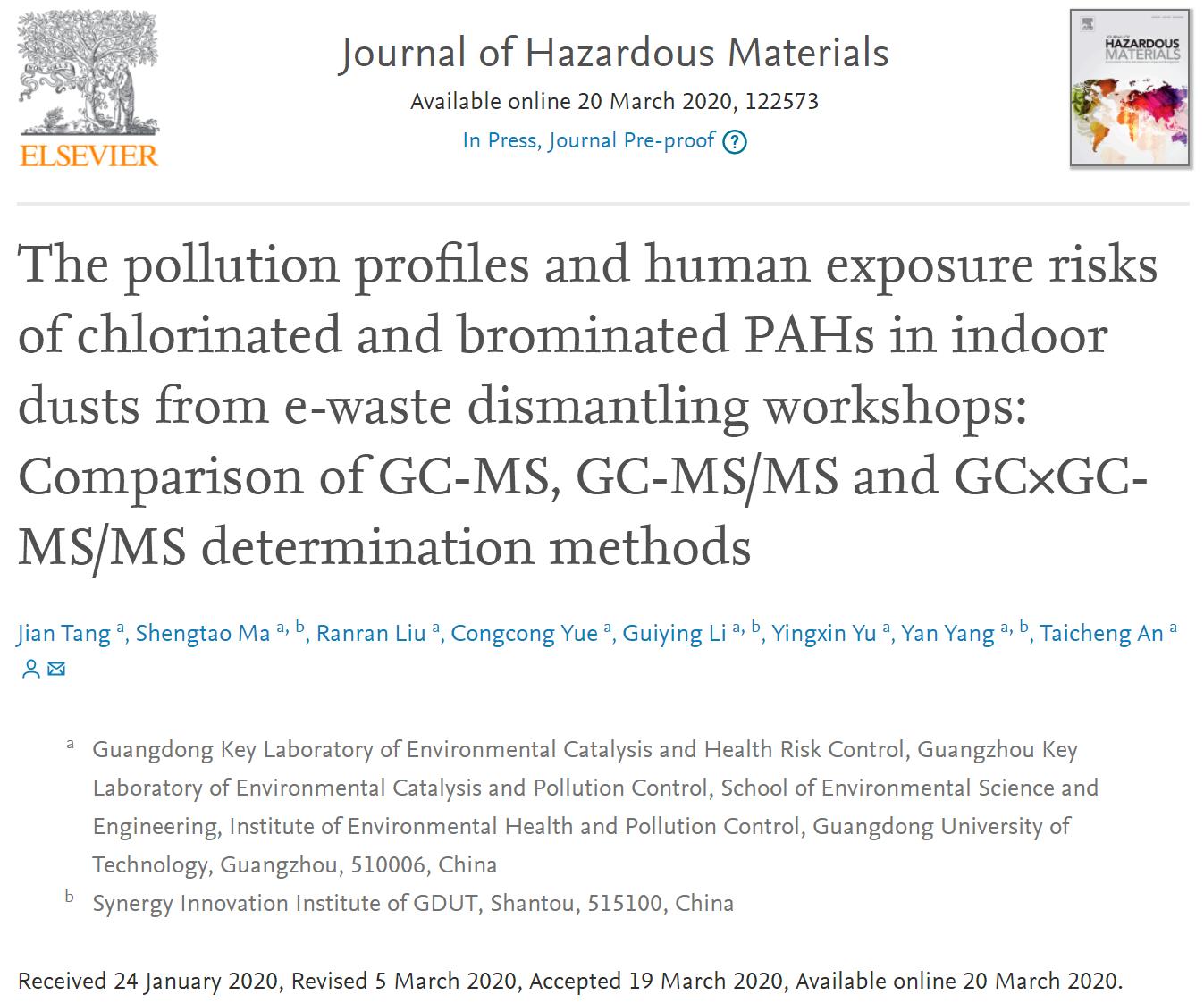Download Address:https://doi.org/10.1016/j.jhazmat.2020.122573.
Jian Tang, Shengtao Ma, Ranran Liu, Congcong Yue, Guiying Li, Yingxin Yu, Yan Yang, Taicheng An*. The pollution profiles and human exposure risks of chlorinated and brominated PAHs in indoor dusts from e-waste dismantling workshops: Comparison of GC-MS, GC-MS/MS and GC×GC-MS/MS determination methods. J. Hazard. Mater. 2020, 394:122573.

ABSTRACT
The toxicities of some chlorinated and brominated polycyclic aromatic hydrocarbons (X-PAHs) are higher than their corresponding parent PAHs. However, the identification and quantitation of X-PAHs in environment are still changeable and limitedly reported. To develop a robust method for routine analysis of X-PAHs in environmental samples, the determination of 34 X-PAHs was performed and compared using different instruments, including gas chromatography-mass spectrometry (GC–MS), gas chromatography-tandem mass spectrometry (GC–MS/MS) in both electron ionization (EI) and negative chemical ionization (NCI) modes, and comprehensive two-dimensional gas chromatograph-tandem mass spectrometer (GC×GC–MS/MS). GC-EI-MS/MS possessed the highest sensitivity with method detection limits of 2.00–40.0 and 2.00–20.0 pg/g dry weight (dw) for Cl-PAHs and Br-PAHs, respectively. This validated method was then applied to analyze X-PAHs in indoor dusts from a typical e-waste dismantling workshop, and the concentrations of Σ18Br-PAHs (8.80–399 ng/g dw) were higher than Σ16Cl-PAHs (7.91–137 ng/g dw). The toxicity equivalency quantities (TEQs) of Cl-PAHs at e-waste dismantling workshop and Br-PAHs at raw materials crushing workshop showed the highest values of 176 and 453 pg·TEQ/g, respectively. Cl-PAHs and Br-PAHs posed a potential health risk to workers through dust ingestion in workshops. Further attention should be payed to the formation mechanism of X-PAHs and the health risk.

